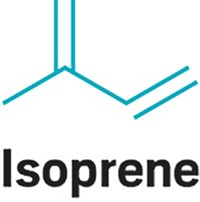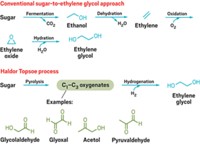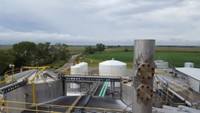Advertisement
Grab your lab coat. Let's get started
Welcome!
Welcome!
Create an account below to get 6 C&EN articles per month, receive newsletters and more - all free.
It seems this is your first time logging in online. Please enter the following information to continue.
As an ACS member you automatically get access to this site. All we need is few more details to create your reading experience.
Not you? Sign in with a different account.
Not you? Sign in with a different account.
ERROR 1
ERROR 1
ERROR 2
ERROR 2
ERROR 2
ERROR 2
ERROR 2
Password and Confirm password must match.
If you have an ACS member number, please enter it here so we can link this account to your membership. (optional)
ERROR 2
ACS values your privacy. By submitting your information, you are gaining access to C&EN and subscribing to our weekly newsletter. We use the information you provide to make your reading experience better, and we will never sell your data to third party members.
Business
A Feud Fueled By Alcohol
Gevo and Butamax are locked in a competition to bring on capacity and cultivate markets for isobutyl alcohol
by Alexander H. Tullo
June 4, 2012
| A version of this story appeared in
Volume 90, Issue 23

A bitter rivalry is brewing in the world of biobased isobutyl alcohol. Technically, the two main players, Gevo and Butamax, couldn’t be more alike. Both aim to use genetically modified yeast to make isobutyl alcohol in retrofitted corn ethanol plants. Their technologies are so similar, in fact, that the two firms are dragging each other to court for patent infringement.
But the two players come from different worlds. Butamax is a joint venture between two giants, BP and DuPont. Gevo is a Colorado-based start-up that made an initial public offering (IPO) of stock last year. And the two are approaching the market differently. Butamax seeks to license its technology and sell isobutyl alcohol into the fuel market. Gevo is initially targeting the chemical industry with product that it makes on its own.
In this race to commercialize biobased isobutyl alcohol, Gevo has taken the lead. Late last month, it initiated production in a former corn ethanol plant in Luverne, Minn. The retrofit took about a year.
Talking about the new plant, Patrick R. Gruber, Gevo’s chief executive officer, is triumphant. “A lot of people expected us to take longer because of the track record in the sector,” he says. “They aren’t used to having companies go out and execute.”
But Gruber won’t declare victory over his rival, even though Butamax’ commercialization plans haven’t advanced as far. Gruber acknowledges that his company has a lot of work ahead of it to prove its technology. “The only thing that matters is getting product out the door,” he says. “We have laid a lot of pipe, controls, and pumps. We have to make sure that everything is behaving as expected.”
Gevo’s plan is to ramp up gradually and have the plant running at a rate of 1 million gal per month by the end of the year. By the end of 2013, Gevo hopes to achieve the plant’s full capacity of 18 million gal per year.
The next step for Gevo is a joint venture with Redfield Energy to convert an ethanol plant in Redfield, S.D., into a 38 million-gal isobutyl alcohol facility. Construction is set to begin later this year and be completed in 2013. Gruber hopes to incorporate lessons learned in Luverne into the design of the Redfield facility.
After Redfield, Gevo plans to license the technology to ethanol companies that wish to get into the isobutyl alcohol business. Brett Lund, Gevo’s general counsel, has already drafted a memorandum of understanding with a large ethanol company—he won’t say which—to retrofit ethanol capacity.
Gruber says it makes sense for Gevo to assume most of the risk of the new technology before it hands the process off to licensees. “You don’t license technology until you actually know it works,” Gruber says. “And people who think otherwise—they’re crazy.”
That remark could be taken as a swipe at Butamax, which has plunged into licensing from the get-go. In April, the company inked an agreement with Fagen, an engineering firm that has 85 ethanol plants to its credit. The partners plan to retrofit ethanol plants, with Butamax marketing the isobutyl alcohol output. “Having a partner that is highly connected to the existing industry and actually built a large proportion of the existing plants is a natural fit for Butamax,” says Paul Beckwith, Butamax’ CEO.
Late last year, Butamax formed the Early Adopters Group for ethanol makers interested in the retrofit concept. In December, Highwater Ethanol of Lamberton, Minn., signed on as the first member. It was followed last month by Lincolnway Energy and Corn LP. Both are Iowa companies that run Fagen-built ethanol plants.
Although it doesn’t have its own commercial plant, Butamax has operated a demonstration facility in Hull, England, since 2010. There, Butamax engineers are fine-tuning the technology so they can have a commercial design ready next year. The company hopes to have its first licensed plant running in 2014.
Beckwith says Butamax’ approach to the market is a consequence of being a joint venture of two large companies. He says large firms prefer to invest the technical time and effort prior to commercialization “as opposed to developing the technology in your commercial asset. If you are a start-up company that does an IPO, then getting to commercial production as soon as possible is important as evidence of progress.”
What Gevo and Butamax can agree on is that isobutyl alcohol is a molecule with a promising future.
Butamax is focusing on blending isobutyl alcohol into gasoline. Beckwith says it has many advantages over ethanol, such as a greater energy density and a smaller propensity for corroding fuel systems. These factors allow isobutyl alcohol to be blended into gasoline at up to 16% by volume, compared with ethanol’s limit of about 10 vol % for standard engines.
To maintain gasoline’s optimal vapor pressure, refiners adding ethanol need to counter its high vapor pressure by removing other volatile components, such as light naphtha, which then go to less profitable markets. With its lower vapor pressure, isobutyl alcohol avoids the need to do so. Additionally, a gallon of isobutyl alcohol has more renewable carbon than a gallon of ethanol, Beckwith notes, enabling refiners to more effectively meet regulatory requirements for renewable-fuel use.
Gevo’s initial target markets are chemicals and specialty fuels. The company has formed a number of partnerships to promote the use of isobutyl alcohol as a building block chemical. The most prominent of these is with Coca-Cola to develop a route to p-xylene that will enable biobased polyethylene terephthalate bottles.
The company is working with Lanxess to use the alcohol to make the synthetic rubber feedstock butylene and with the Air Force to oligomerize butylene to make jet fuel. Additionally, a big chunk of the output from Gevo’s first two plants will go to Sasol, which will sell the isobutyl alcohol as a solvent.
Ron Cascone, a principal with the consultancy Nexant, says biobased isobutyl alcohol will have ready chemical markets, provided it can be made economically. Users of C4 hydrocarbons such as Lanxess, he says, are eager for an alternative route to their raw materials. Cheap natural gas from shale in the U.S. is inducing petrochemical producers to crack ethane instead of naphtha. The change means they are making fewer coproduct C4s.
“The ante is way up there to make a C4 that can substitute for the C4s that have gone missing from the petrochemical value chain,” Cascone says. “It is a lot more interesting to make C4s now than it was three to four years ago.”
The most dramatic place Gevo and Butamax will face off isn’t in the marketplace but in the courtroom. Both companies are suing each other for patent infringement, and a court is scheduled to hear the cases in April 2013.
Butamax claims to hold the foundational intellectual property in the field of making isobutyl alcohol via yeast fermentation. “Butamax invented and patented the fundamental process for fermenting isobutanol from sugar, and we have also patented a large number of improvements,” Beckwith says. “Based on Gevo’s publications, we believe that they are using the fundamental pathway that we have invented, and hence the lawsuit.”
Gevo counters that Butamax should not have been issued the patents in the first place. “What Butamax did was file for a patent on basically a pathway to making isobutanol that’s been known since the ’60s,” Gevo’s Lund says. “It is actually a naturally occurring pathway.” He says Butamax withheld prior art that it should have filed with the patent application. Gevo submitted this prior art with the U.S. Patent & Trademark Office in a petition to have the patent reexamined.
Furthermore, even if Butamax’ patents were valid, Lund says, Gevo isn’t infringing on them. “We developed our own pathway, which is completely distinct and separate from the one that they use,” he says. Gevo is countersuing for infringement of its patents, a suit that could limit Butamax’ ability to convert ethanol plants, Lund adds.
The companies agree the legal maneuvers aren’t likely to affect their commercialization plans before they have their day in court. Until such time, the two will have to resort to sparring with verbal jabs.





Join the conversation
Contact the reporter
Submit a Letter to the Editor for publication
Engage with us on Twitter